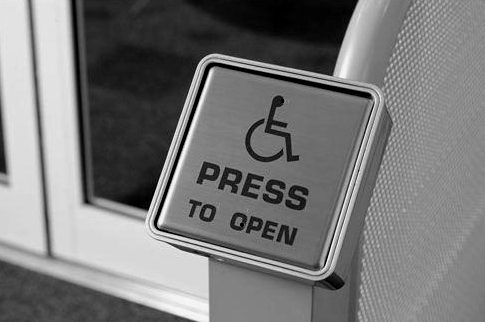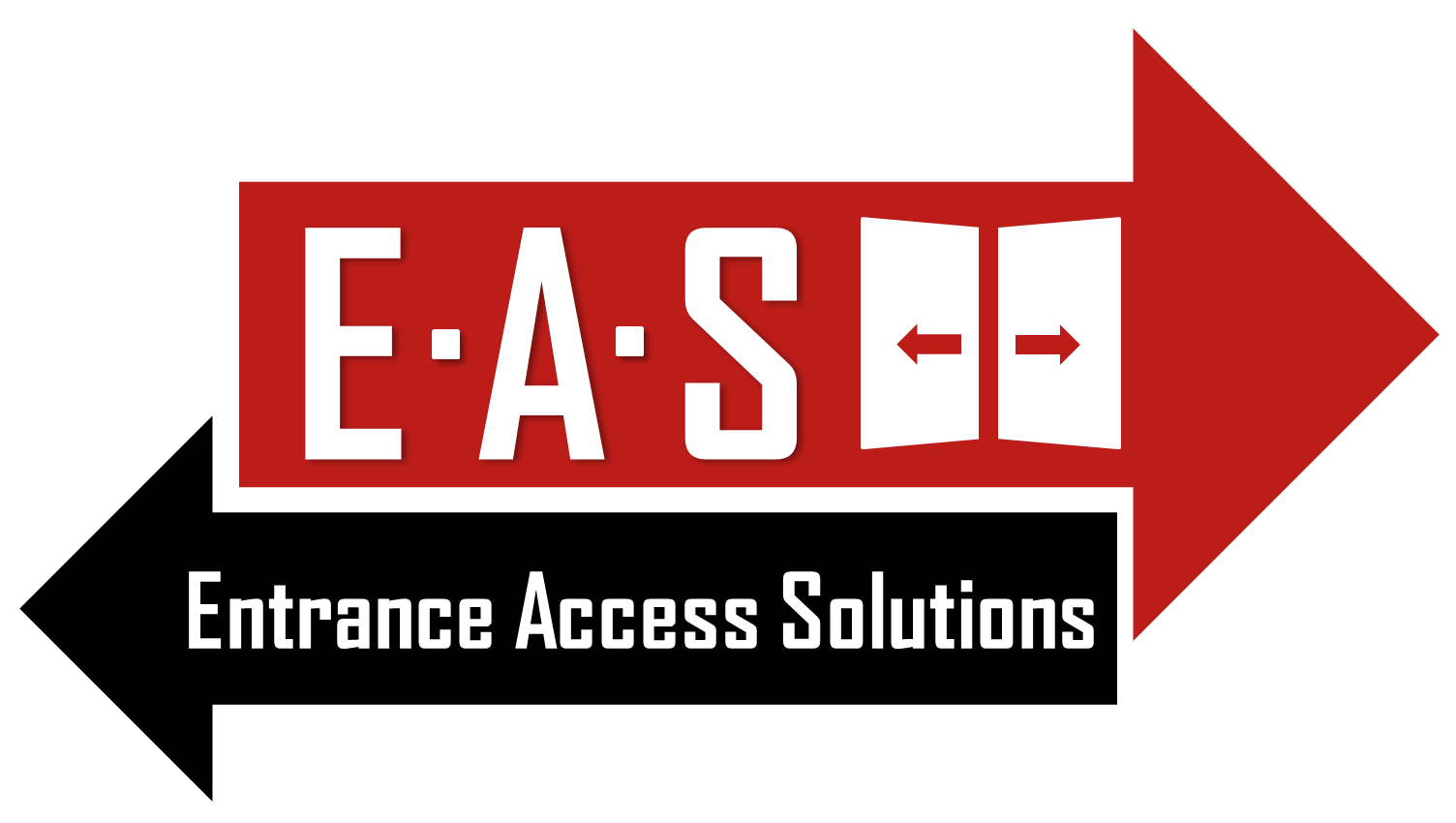DDA Disabled Access Door Systems
Entrance Access Solutions offer a cost-effective disabled entry door system guaranteed to ensure that your business complies with the latest Disability Discrimination Act (DDA) regulations.
Features and Benefits
Unlike standard automatic doors, low energy swing doors can be used as manual doors by the public or staff in a building. They can also be activated as an automatic door using push pads mounted in a position that is easily accessible. Some of their main features and benefits include:
- Quietness, smooth operation, and safety
- Wide range of activation options
- External/Internal Door applications
- Easy installation
- Ability to push or pull the door open
- Retrofit solutions to existing doors

All our automatic door solutions are fitted with relevant signage and considerations include wheelchair access, door widths, clear vision panels, door entry equipment position and height; all with relevant DDA approved door handles and ironmongery.
Safety
Safety sensors ensure automatic doors cannot open or close if obstructed and all automatic door operators can be fitted with a fail-safe system that automatically opens or closes the door in the event of a power failure; which can also be linked to fire alarm systems. They can also be fitted with a break-out facility to enable them to be pushed out manually to facilitate an emergency escape.
DDA compliance
DDA compliant low energy doors can often be retrospectively installed to existing doors making this a cost-effective option. It's an excellent way to ensure that your business provides accessible doors for the disabled and wheelchair users. For further advice regarding the DDA you may wish to visit:
What are Disabled Access Doors Systems?
The Disability Discrimination Act (DDA) was introduced to ensure that anyone with a disability, whether it's a wheelchair user or people with other disabilities, can gain easy access to any public premise or building.
DDA doors are automatic door set-ups that can be either sliding doors or swinging doors. Any door can be converted into a DDA compliant system by adding access points such as a push pad entry or wheelchair ramps
Who has to have DDA compliant entrances?
Some people or organisations like employers, shops, local authorities and schools must take adequate steps to remove the barriers faced by anyone who has a disability. The goal is to ensure that everyone receives the same services, as far as this is possible, regardless of their disability. This can be achieved through actions such as the installation of wheelchair-accessible doors or other access solutions that meet certain building regulations.
The Equality Act 2010 says that changes or adjustments should be made to ensure anyone can access the following:
- education,
- employment,
- housing,
- goods and services like shops, banks, cinemas, hospitals, council offices, leisure centres,
- associations and private clubs like the Scouts and Guides, private golf clubs and working men clubs.
More information on this topic can be found on the citizens advise website.
The best solution is always one that allows independent entry for a disabled customer without requiring additional assistance and that's exactly what wheelchair-accessible doors help achieve.
Making doors easier to use
Doorways and doors can be another barrier for disabled customers such as wheelchair users and others. While automatic sliding doors are usually a great solution, it is recognised that installing them is not always possible. Therefore, if independent access through the main entrance cannot be provided in a reasonable way, it is important to try to:
- Designate an alternative entrance with level access
- Fit a call bell or an entry phone system
- Offer assistance over the step where stepped access cannot be avoided
- Offer alternative methods of providing services such as delivering to people’s homes or through the post.
Practical suggestions for complying with DDA
In order to comply with the DDA requirements, business and building owners can:
- Position the door handles at a height of one meter from the ground for a better wheelchair access
- Replace the door handle with one that is easier to grip, such as a D-shape handle, and one with better colour contrast
- Make the door easier to open
- Check that entrance mats are sitting flush
- Add safety markings to glazed doors
- Maintain doors to ensure that they open and close smoothly
- Install wheelchair accessible doors or DDA compliant disabled access doors.
Upgrading Manual Doors to be DDA compliant
Any automatic door is usually DDA compliant. However, things can get a bit more complicated when it comes to the manual doors. Luckily, EAS can offer a service that allows keeping the original manual door system in place while attaching an automatic motor, which is activated when needed.
This means, that the door is manually operated most of the time. Nevertheless, when someone does require assistance in the form of wheelchair accessible door, they can activate the automation and the door will become easily accessible.
This could take the form of a push pad, a swipe key, or a call button. We can offer many options to ensure we meet your particular needs and help ensure that you get high-quality doors.
Installing Door Push Pads
DDA compliant Push Pads can be installed retrospectively in most cases. EAS can fit these devices on most standard doors even if they are not usually automatic.
Installation can be very simple and may only require us to change a few parts of your existing door system. EAS complies in line with the latest UK and EU safety regulations.
We can also fit doors with safety sensors to ensure that when the doors open they do not cause harm to anyone. Even security features like this can normally be retrofitted to a door system within a working day. Feel free to contact us.
If you would like a FREE no-obligation quote specifically tailored to your requirements, then please get in touch to find out what Entrance Access Solutions can do for you.

